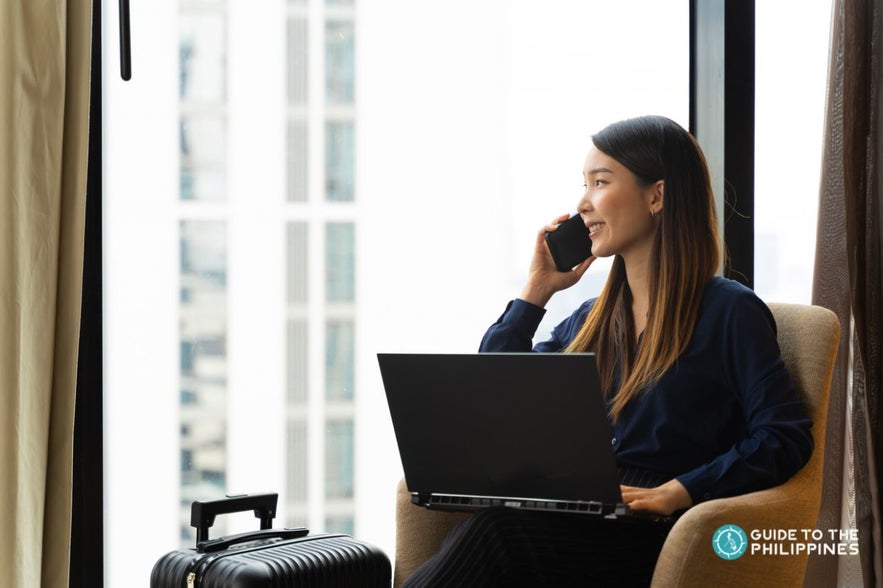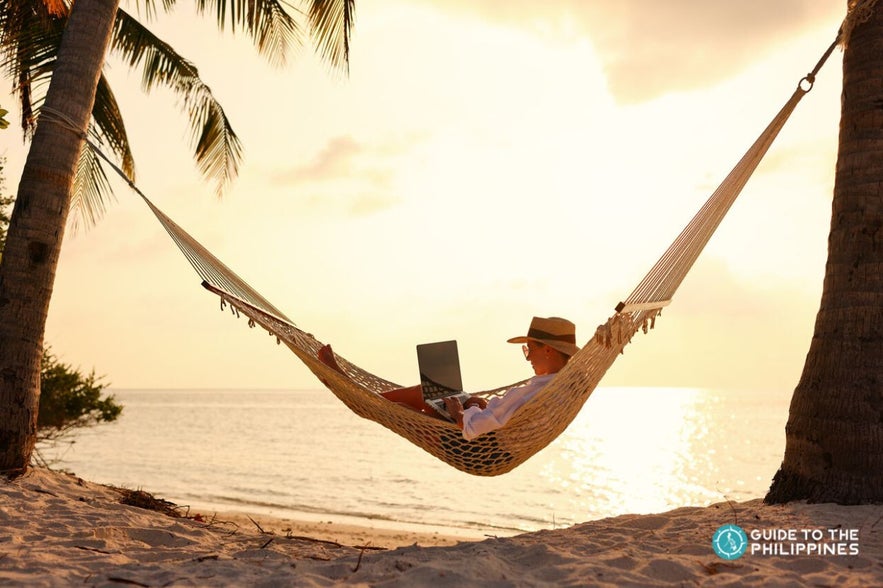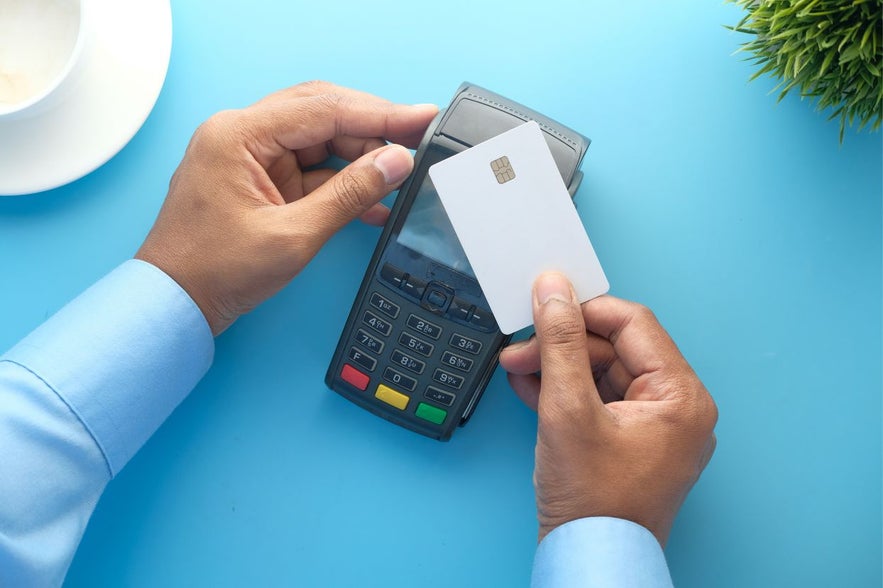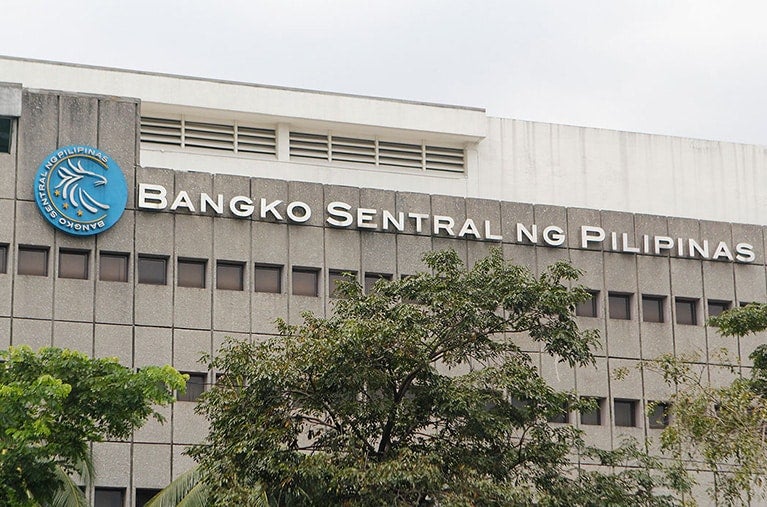
The Philippines is one of the most affordable destinations you can visit, where your budget can stretch surprisingly far. If you're traveling here for the first time, it’s important to plan how much cash to bring and where to exchange money in the Philippines to get the best value. Understanding the Philippine peso and the exchange rate will help you make smart money choices during your trip.
Before your trip, it helps to know how to exchange money in the Philippines and what options you’ll have once you arrive. You can exchange currency at banks, money changers, and even at airports, though rates may vary. If you’re landing in the capital, you might wonder about the best place to exchange money in Manila Airport—read on for insider tips to help you get the best rates.
Exchanging currency doesn’t have to be confusing or intimidating, even if it’s your first visit. In this article, you’ll learn how to exchange currency in the Philippines safely and conveniently, from trusted exchange centers to online converter tools. Keep reading to discover everything you need for a smooth, secure, and hassle-free trip.
Key Takeaways
-
The Philippine peso (PHP) is the country’s official currency. Familiarize yourself with its denominations, designs, and exchange rate before your trip.
-
Exchange rate: For the most up-to-date information, check the current exchange rate for the Philippine peso on the official website of the Bangko Sentral ng Pilipinas (BSP).
-
Know where to exchange money. Banks, licensed money changers, and reputable exchange centers in malls and major cities usually offer the best exchange rates. Authorized money changers in the city are often the best place to exchange money in the Philippines.
-
To ensure safe currency exchange in the Philippines, always use authorized money changers regulated by the Bangko Sentral ng Pilipinas (BSP). Here’s what to look for:
-
Check for a BSP license. A legitimate money changer clearly displays its BSP certificate at the counter.
-
Verify receipts and rates. The establishment should provide a receipt for every transaction and post transparent exchange rates.
-
Avoid street money changers. Stay away from unmarked stalls or individuals offering better rates outside official establishments—they may hand you counterfeit bills or shortchange you.
-
-
Airport exchanges. You can exchange money at Manila Airport for convenience, but licensed exchange centers in the city usually offer better rates. It’s best to exchange only a small amount at the airport to cover immediate expenses, such as transport.
-
Stay safe when exchanging money. Always use authorized establishments, count your cash before leaving the counter, and avoid street exchangers offering unusually high rates.
-
Bring US dollars. US dollars (USD) are the best currency to bring when traveling to the Philippines, as they are widely accepted for exchange. Once you arrive, you can easily convert them to Philippine pesos (PHP).
-
ATM withdrawals. Withdrawing Philippine pesos from ATMs is convenient and often provides good rates, but expect transaction fees. Use international cards like Visa, Mastercard, or American Express, and withdraw larger amounts in malls or banks to save on costs.
-
Debit and Credit Cards: ATMs and credit cards are widely accepted in major cities and tourist areas, but cash is still preferred in rural towns and smaller islands.
-
Cashless payments in the Philippines. Digital wallets such as GCash, Maya, and GrabPay, as well as credit cards, are accepted in most urban areas, restaurants, and malls.
-
Always keep smaller bills on hand. Many small stores, local markets, and eateries in the Philippines may not have change for large denominations, so having ₱20, ₱50, and ₱100 notes makes transactions easier.
-
Bring just enough Philippine Peso for your daily expenses, especially when visiting islands or rural areas where ATMs and card payments may be limited. Around PHP 2,000–3,000 (USD 35–50) per day usually covers meals, transport, entrance fees, and small purchases.
-
Prebook tours, transportation, and accommodations online. Paying in advance reduces how much cash you need to carry, keeping your trip safer and more convenient.
-
Consider booking Philippine vacation packages with a trusted local travel agency like Guide to the Philippines, which can arrange your airport transfers, tours, and hotels while providing expert support so you can fully enjoy your vacation.
-
Philippine Currency Exchange Converter Calculator
You can use this handy widget to easily convert your currency to Philippine Peso. Just enter the amount you want to convert and choose your currency. Whether you're budgeting for your trip or shopping, this online calculatorl makes it easy to plan your financials ahead for your vacation in the Philippines.
Source: https://currencyrate.today/converter-widget
Frequently Asked Questions About Philippine Currency and Money Exchange
Planning a trip to the Philippines and wondering how to handle your money? Here’s everything you need to know about the Philippine peso, from where to exchange money in the Philippines to using your credit card during your trip.
Keep reading for useful currency tips, the latest exchange rate info, and personal travel advice for a smooth, worry-free trip across the Philippines.
What is the currency of the Philippines?
The official currency of the Philippines is the Philippine Peso (PHP), represented by the symbol ₱. Banknotes and coins come in various denominations, so it helps to get familiar with their colors and values before your trip.
Can I use foreign currency in the Philippines?
You generally can’t use foreign currency for purchases in the Philippines. It’s best to exchange your money for Philippine pesos (PHP) once you arrive. A few hotels or high-end shops might accept US dollars, but local establishments almost always require pesos.
Where can I exchange money in the Philippines?
You have several options on where to exchange money in the Philippines, depending on your location and convenience. Here’s a quick guide to help you choose the best one:
Banks
Most major banks, such as BDO, BPI, and Metrobank, offer currency exchange services at fair and reliable rates. Transactions are secure, but lines can be long during peak hours. Bring a valid ID, and note that some branches may only exchange for account holders or during specific hours.
Licensed Money Changers
You’ll find licensed money changers in malls, business districts, and tourist areas like Makati City, Cebu City, and Boracay Island. They often offer better exchange rates than banks and have more flexible hours. Just make sure the establishment is authorized—avoid street changers even if their rates seem tempting.
Hotels
Many hotels offer currency exchange at the front desk, which is convenient if you prefer not to go out. However, rates are usually less favorable, so it’s best for small amounts or when you need cash quickly.
Airports
You can exchange cash at Manila Airport and other airports in the Philippines upon arrival. Rates tend to be less favorable than in the city, so only change enough for immediate expenses like transport or snacks. Once settled, look for better rates at banks or money changers nearby.
Remittance Centers
Remittance companies like Western Union, MoneyGram, and LBC Express are also good options for exchanging money in the Philippines. Depending on the location, they may offer currency exchange services and are widely available across towns and cities.
Compare rates before exchanging and always use authorized establishments to avoid scams or receiving counterfeit bills.
How Can I Tell if a Money Changer Is Legitimate in the Philippines?
To ensure safe transactions, always go to authorized money changers regulated by the Bangko Sentral ng Pilipinas (BSP). These establishments follow official exchange standards and operate in secure, well-known locations such as malls, banks, or business districts.
Avoid exchanging money with individuals on the street or at unmarked stalls offering unusually high rates — these are often scams or sources of counterfeit bills.
Here are a few tips to spot legitimate money changers:
-
Look for a BSP license. Check if the money changer is accredited by the Bangko Sentral ng Pilipinas (BSP). Licensed establishments display their BSP certificate or license prominently at the counter.
-
Ask for official receipts. Legitimate money changers always issue official receipts for every transaction. If they refuse or fail to provide one, it’s best not to proceed.
-
Check the setup and signage. Authorized exchange centers usually operate in malls, business districts, or banks. Be cautious of small stalls or booths that look unprofessional or lack clear branding.
-
Avoid “street” money changers. Never exchange money with individuals offering better rates outside official establishments—they may hand you counterfeit bills or shortchange you.
Is it better to exchange currency in the Philippines or before arriving?
It’s usually better to exchange currency once you arrive in the Philippines, as local rates are more favorable. If you need cash upon arrival, exchange just enough at the airport for transportation or meals, then find a city-based money changer for the best value.
For added convenience, consider booking your Manila airport transfer in advance. This way, you’ll have a car ready when you arrive, and you can exchange your money later in the city, where rates are typically better.
What is the exchange rate for Philippine Peso?
You can check the exchange rate today for the Philippine peso on the official Bangko Sentral ng Pilipinas (BSP) website. Rates fluctuate, so it’s smart to monitor updates before and during your trip.
Are credit cards widely accepted in the Philippines?

Yes, credit cards are accepted in most top destinations in the Philippines, especially in major cities, resorts, and tourist areas. However, smaller shops, local markets, and rural areas still prefer cash, so it’s smart to always keep some on hand.
The most commonly accepted credit card networks are Visa, Mastercard, and American Express. Having a mix of cash and card ensures a smooth and hassle-free experience wherever your travels take you.
Can I withdraw Philippine Peso from ATMs in the Philippines?
Yes, you can withdraw Philippine Peso (PHP) from ATMs in the Philippines. ATMs in the Philippines typically support withdrawals in Philippine Peso using local debit cards, credit cards, and some international cards linked to major networks such as Visa, Mastercard, or American Express.
However, if you are using an international card, it's a good idea to check with your bank first to make sure it will work in Philippine ATMs and to be aware of any associated fees for international transactions.
Which Banks Are Best for International ATM Withdrawals in the Philippines?
If you prefer to withdraw cash instead of exchanging currency, most banks in the Philippines accept international cards from Visa, Mastercard, and American Express. However, withdrawal fees and limits can vary, so it’s best to use ATMs known for fair rates and transparent charges.
Based on traveler feedback shared online, here are some bank ATMs in the Philippines that receive favorable reviews from foreign visitors:
-
HSBC Philippines – Frequently praised by travelers for having some of the lowest ATM withdrawal fees for foreigners. While its ATMs are limited to major areas like Manila City and Cebu City, they’re ideal for larger withdrawals due to lower or even no local fees.
-
Bank of the Philippine Islands (BPI) – Offers one of the clearest and more favorable fee structures for foreign cards. Its large network, especially in tourist destinations, makes it one of the most reliable options for international travelers.
-
Banco de Oro (BDO) – Known for its wide coverage and compatibility with international cards. Though it charges standard ATM fees, BDO’s accessibility across cities and smaller islands makes it a convenient choice for travelers.
Tip: Always check your home bank’s international withdrawal policy and fees before your trip. The full cost of withdrawing abroad often includes multiple components—your home bank’s international fee, currency conversion markup, and the local ATM’s surcharge.
To keep costs down:
-
Withdraw larger amounts less often to minimize repeated transaction fees.
-
Use your home bank’s partner ATMs, if available, to reduce extra charges.
-
Stick to ATMs inside malls or banks for safety and reliability.
Even with low local ATM fees, being mindful of your home bank’s terms helps you avoid surprises and make the most of your travel budget in the Philippines.
Can I exchange Philippine pesos back to my home currency?
Yes, you can exchange leftover pesos back to your home currency at banks, exchange counters, or airports before you leave. Rates may vary, so compare options and keep your exchange receipts, as some establishments may ask for them.
Is it safe to carry cash in the Philippines?

It’s best to carry only what you need for the day and keep extra cash secured in your hotel safe. Booking car rentals, activities or day passes, and tours to top destinations online can help minimize how much cash you need to carry.
Should I Carry Cash All the Time in the Philippines?
Yes, it’s best to carry some cash with you at all times, especially when visiting smaller towns or islands where card payments may not be accepted. While you can use credit or debit cards in major cities, malls, and restaurants, many local shops, markets, and transport options still prefer cash.
Keep smaller bills like ₱20, ₱50, and ₱100 notes for convenience. They’re handy for everyday purchases such as jeepney fares, snacks, or small souvenirs, as some vendors may not have change for larger denominations.
How Much Cash Should I Carry in the Philippines?
It’s best to carry just enough cash for your daily expenses, especially when exploring islands or rural areas where ATMs and card payments aren’t always available.
Around PHP 2,000 to PHP 3,000 (USD 35–50) a day is usually enough for meals, transportation, entrance fees, and small purchases. Keep larger amounts secured in your hotel or a money belt, and bring smaller bills like PHP 20, 50, and 100 for convenience when paying at local markets or using public transportation.
What is the best currency to take to the Philippines?
The best currency to take to the Philippines is the US dollar (USD), as it’s widely accepted and easy to exchange for pesos. You’ll find the most competitive rates in Manila City and other major tourist hubs. Avoid bringing currencies that are less common in Asia, as they might be harder to exchange.
All You Need to Know about the Philippine Peso
In this section, you'll learn more about the history and features of the Philippine peso. The Philippine Peso has a long history that dates back to the time when the Philippines was colonized by Spain. Over the years, both the design and value of the Philippine Peso have evolved, reflecting the country’s culture and heritage.
When you look at Philippine money, you'll notice images of important historical figures such as Andres Bonifacio, Apolinario Mabini, Jose Rizal, and Emilio Aguinaldo, as well as native plants and animals like the Philippine eagle, Visayan spotted deer, and local flora.
The designs honor the nation’s history while celebrating the unique wildlife and natural treasures found across its islands, cities, and towns.
What are the denominations of Philippine Peso banknotes and coins?

The Philippine peso comes in various denominations, both in banknotes and coins. Banknotes are issued in 20, 50, 100, 200, 500, and 1000 pesos, each with unique colors and designs for easy identification.
Coins are available in smaller denominations, including 1, 5, 10, and 25 centavos, as well as 1, 5, 10, and 20 pesos. They differ in size, shape, and material, serving different purposes in daily transactions across cities, towns, and islands. Together, the banknotes and coins make up the Philippines’ currency system.
How can I differentiate between genuine and counterfeit Philippine currency?
To spot genuine Philippine currency, look for security features introduced by the Bangko Sentral ng Pilipinas (BSP). These include holographic strips, raised prints, watermarks, and other unique elements designed to prevent counterfeiting. If you’re unsure, compare the bill to a verified note or ask someone at a bank for help. Staying vigilant ensures you don’t accidentally use fake money.
Photo by Bangko Sentral ng Pilipinas
Can damaged or torn banknotes still be used?
Banks and businesses in the Philippines may accept slightly damaged or torn banknotes, but it’s better to exchange them for new bills at a bank or financial institution. Heavily damaged notes usually need to be exchanged directly at the Bangko Sentral ng Pilipinas (BSP). To avoid complications, it’s best not to use damaged or torn banknotes whenever possible.
How Much Does It Cost to Vacation in the Philippines?

If you're traveling on a budget, you’re in luck. In the Philippines, you can find accommodations and activities that won’t break the bank. For example, hotel stays can be as low as PHP 1,420 (USD 24) per night, day tours start at PHP 250 (USD 4.55), and island-hopping boat tours cost around PHP 900 (USD 16.35). Of course, costs vary depending on your destination, season, and the activities.
For example, a 3-day budget travel package to Sagada Town with tours, transportation, and accommodation begins at approximately PHP 4,279 (USD 77), while a longer 5-day beach holiday on Boracay Island with hotel, transfers, and island-hopping can start at around PHP 11,175 (USD 188).
Flights to Manila City from nearby Asian hubs like Singapore, Kuala Lumpur, or Bangkok can range from PHP 6,000 to PHP 12,000 (USD 105–210), depending on the season and airline.
For the best value, consider bundled vacation packages that include accommodations, tours, transfers, and even flights. Bundling often saves you money and ensures all travel arrangements are taken care of. Here are some examples of the best-value packages to give you an idea of costs:
Packages with Hotel Stays Only
For hassle-free trips to some best islands in the Philippines, consider packages that cover accommodations and local transfers. Here are some examples of budget-friendly options that offer great value and convenience:
-
3-Day Cebu Island Province Package - Starts at PHP 4,715 (USD 86) and includes 2-night accommodations, daily breakfast, and airport transfers. Perfect for a budget-friendly, stress-free stay. Cebu Island vacation packages like this can save you time and money.
-
3-Day Boracay Island Holiday Package – Starts at PHP 6,149 (USD 113) and includes 2-night beachfront accommodations, breakfast, land and boat transfers, and environmental and port fees. Booking Boracay Island vacation packages like this ensures a hassle-free island escape.
-
3-Day Bohol Island Tour Package - Starts at PHP 11,649 (USD 213) and includes 2-night accommodations, daily breakfast, airport transfers, and a tour to Bohol Island’s Chocolate Hills with a boat lunch cruise. Ideal for families or first-time visitors.
Multi-destination Packages Including Flights
For longer adventures or trips that take you across multiple islands, consider packages that already include domestic flights. They offer excellent value and convenience, saving you time and effort when moving between destinations. Here are some great examples to help you plan your trip:
-
5-Day Palawan Island Beach & Nature Package from Manila City – Starts at PHP 68,509 (USD 1,255) and covers Puerto Princesa City and El Nido town, including domestic flights, airport transfers, 4-night accommodations, baggage allowance, and guided tours.
-
4-Day Tour Package to Coron Town from Manila City – Starts at PHP 35,447 (USD 650) and includes 3-night accommodations, daily breakfast, airport transfers, Coron Island Hopping Tour, and baggage allowance. Perfect for exploring Palawan’s natural wonders.
By booking Philippine tour packages with the best itineraries, you enjoy pre-arranged tours, airport transfers, and transportation, reducing stress and maximizing convenience. Whether you’re island hopping, exploring cities, or enjoying nature, these Philippines itineraries make planning your trip easier, more affordable, and completely stress-free.
- For a detailed breakdown of expenses, read the ultimate guide to how much a trip to the Philippines costs to help you plan your budget and make the most of your vacation.
Tips for Saving Money in the Philippines

Traveling around the Philippines doesn’t have to be expensive. With a few smart choices, you can explore its islands, cities, and countryside without stretching your budget. Whether you’re planning a beach escape, an island-hopping adventure, or a cultural trip, these practical tips will help you save more while enjoying your journey.
From early bookings to choosing local transport, every little decision can make a big difference in your travel budget. The key is to plan ahead, stay flexible, and look for ways to bundle your expenses for better value. Here are some tried-and-true tips to help you make the most of your money during your Philippine vacation.
Book in advance
Save money by booking your accommodations and flights to the Philippines early. Prices are usually lower when you reserve ahead, especially during peak seasons. Consider booking with agencies like Guide to the Philippines that offer flexible cancellation terms, giving you peace of mind in case your plans change.
For a practical alternative to carrying cash, you can also buy Guide to the Philippines travel e-gift cards. Use these as a prepaid travel fund to book tours, transfers, hotels, flights, and vacation packages all in one place.
Take Public or Shared Transportation
 Transportation costs can add up quickly, so opt for public transport or shared airport and city transfers whenever possible. Jeepneys, buses, and shared vans are budget-friendly ways to get around cities and towns.
Transportation costs can add up quickly, so opt for public transport or shared airport and city transfers whenever possible. Jeepneys, buses, and shared vans are budget-friendly ways to get around cities and towns.
You can also take ferries around the Philippines to visit different islands for a more scenic and affordable route. These options are perfect for travelers who want to experience local life without overspending.
Stay at Budget-Friendly Hotels
You don’t need to stay at luxury resorts to have a comfortable trip. Many budget-friendly hotels, hostels, and guesthouses in the Philippines offer cozy stays at affordable rates. Look out for promotions or discount codes online to stretch your budget even further.
If you want even better value, consider bundled vacation packages that include budget accommodations and transfers. For example, you can enjoy a 3-day vacation in Siargao Island for only PHP 6,500. It's also possible to go on a 3-day getaway in El Nido Town for just PHP 4,000, or have fun on 3-day Boracay Island holiday for around PHP 7,000.
Pre-arranged packages not only simplify your planning but also help you save on travel essentials.
Go Where the Locals Eat

One of the best ways to experience the Philippines is through its food. Skip the fancy restaurants and follow where the locals eat — you’ll find authentic flavors and generous portions at unbeatable prices. From sizzling barbecue skewers to hearty rice meals, local eateries and carinderias (small food stalls) serve dishes that truly capture the Filipino spirit.
Don’t miss the street food scene in the Philippines, especially in bustling cities like Manila or Cebu City, where you can try fish balls, kwek-kwek (orange-coated quail eggs), or halo-halo for dessert. Eating like a local not only saves you money but also lets you savor the Philippines’ rich culinary culture bite by bite.
Book Shared Tours or Activities

If you’re exploring destinations like Palawan Island or Bohol Island, joining shared tours can help you make the most of your budget. Shared island-hopping and countryside tours let you visit top attractions without paying the premium of a private trip.
It’s also a great way to meet fellow travelers while keeping your expenses low. Whether you’re joining Palawan Island hopping tours or cruising along the Loboc River, shared experiences often bring just as much fun — all at a fraction of the cost.
Avoid traveling during peak season
Timing your trip can make a big difference in your budget. Peak travel months in the Philippines — from March to June and November to December— usually mean higher prices for hotels, flights, and tours.
The best time to travel to the Philippines to save money and enjoy a more relaxed atmosphere is during the off-peak months of January to February or July to October. You’ll find better deals, fewer crowds, and a chance to experience the islands, towns, and cities at a slower, more authentic pace.
Essential Travel Tips about Money in the Philippines

Managing your money wisely can make your trip across the Philippines smoother and more enjoyable. Whether you’re exploring the bustling streets of Manila City, relaxing on Cebu Island, or discovering hidden beaches on Palawan Island, knowing how to handle your finances helps you travel stress-free.
You’ll find that both cash and cards are useful depending on where you go. While modern cities have plenty of ATMs and card-accepting shops, smaller towns and remote islands often rely on cash. By planning ahead, you can avoid unnecessary fees and focus on enjoying your island adventures.
Here are some practical money tips to help you spend smart, stay comfortable, and make the most of your travels in the Philippines.
Credit Card vs Cash

When visiting the Philippines, it’s best to carry a mix of both cash and a credit card. Major cities and upscale hotels usually accept cards, but many small shops, tricycle drivers, and local eateries only take cash. You’ll also need pesos for island fees, souvenirs, and tips.
You can comfortably budget around PHP 2,000 to PHP 3,000 (USD 35–50) per day for meals, transportation, entrance fees, and small purchases. It’s best to keep larger amounts safely stored in your hotel or a money belt, and carry smaller bills like PHP 20, 50, and 100 for everyday expenses at local markets or when using public transport.
Having a credit card is still handy for emergencies, flight bookings, or large purchases. If possible, choose a card that doesn’t charge high foreign transaction fees — it’ll help you save a little extra for your adventures.
The most widely accepted credit cards in the Philippines are Visa, MasterCard, and American Express, which you can use in hotels, restaurants, shopping malls, and major tourist establishments.
ATMs in the Philippines
You’ll find ATMs in major cities, airports, and tourist spots like Manila City, Boracay Island and Cebu City, but they can be limited in remote areas. Most ATMs accept international cards through networks like Visa, MasterCard, Cirrus, and Plus, allowing you to withdraw Philippine Pesos easily.
Before your trip, contact your bank to confirm your card’s international access and ask about withdrawal fees. It’s also smart to withdraw a reasonable amount when you’re in a city, so you’ll have enough cash for smaller towns and islands where ATMs may be scarce.
Tipping in the Philippines
Tipping isn’t required but is always appreciated, especially by service staff and tour guides who go the extra mile. Some restaurants and hotels already include a 10% service charge, so check your bill before adding more. If it’s not included, a tip of around 10–15% is considered generous and thoughtful.
Even small gestures — like tipping your boat crew after an island-hopping tour or your driver after a long ride — show your appreciation and help support local workers.
Different Ways to Pay in the Philippines
Aside from cash and credit cards, you can also use digital payment platforms like GCash, Maya, and GrabPay. These e-wallets are popular among locals and make paying for food, transportation, and tours more convenient.
If you’ll be staying longer, consider setting up one of these apps — it’s a quick way to pay without needing exact change. Just make sure you have a stable internet connection to complete your transactions smoothly.
Spend Your Money Wisely in the Philippines

As you plan your trip, take time to understand the basics of Philippine currency and know where to access cash safely. Traveling smart with your money helps you enjoy each destination with peace of mind. For a worry-free experience, explore Philippines vacation packages that include flights, hotels, and tours — letting you focus on making memories while everything else is handled for you.


















